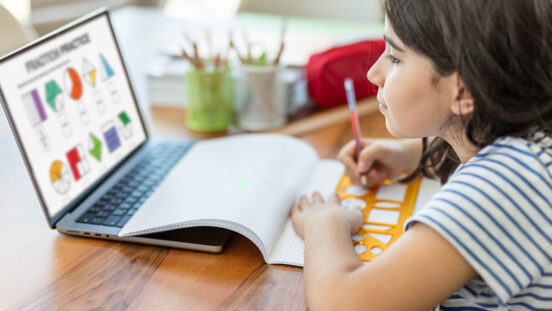Online schooling is not just for lockdowns. Could it work for your child?

Dive into the world of online schooling and unlock educational possibilities that redefine learning beyond the traditional classroom.
Brendon Hyndman, Charles Sturt University and Vaughan Cruickshank, University of Tasmania
During COVID almost all Australian students and their families experienced online learning. But while schools have long since gone back to in-person teaching, online learning has not gone away.
What are online schools doing now? What does the research say? And how do you know if they might be a good fit for your child?
Online learning in Australia
Online learning for school students has been around in basic form since the 1990s with the School of the Air and other government-run distance education schools for students who are geographically isolated or can’t attend regular school.
But until the pandemic, online schooling was largely considered a special-case scenario. For example, for students who are in hospital or training as an elite athlete.
While learning in COVID lockdowns was extremely tough, it also showed schools, students and parents the potential benefits of online learning for a wider range of students. This can include greater accessibility (learning from any location) and flexibility (personalised, self-paced learning).
Students who have mental health challenges or who are neurodiverse particularly found learning from home suited them better. There is also less hassle with transport and uniforms.
This has prompted an expansion of online learning options in Australia.

Primary and high school online learning options
Some schools have been developing online subjects and options to sit alongside in-person classes. For example, in New South Wales, Queensland and the Australian Capital Territory, some Catholic schools are using online classes to widen subject choices.
Some private schools have also begun fully online or blended online/in-person programs in the recognition some students prefer to learn largely from home.
There are also specialist courses. For example, Monash University has a free virtual school with revision sessions for Year 12 students.
What about academic outcomes in online learning?
Research on the academic outcomes of distance education students is inconclusive.
For example, a 2019 US study of around 200,000 full-time online primary and secondary students showed they had less learning growth in maths and reading compared to their face-to-face peers.
A 2017 study of primary and high school students in Ohio found reduced academic progress in reading, maths, history and science. Another 2017 US study also found online students had lower graduation rates than their in-person peers.
Research has also found it is difficult to authentically teach practical subjects online such as visual arts, design and technology and physical education.
But a lot of research has been limited to a specific context or has not captured whether online learning principles have been followed. Online teaching approaches need to be different from traditional face-to-face methods.
These include ensuring there is an adequate number of teachers allocated and personalised attention for students, and ways to ensure collaboration between students and parental engagement with the school.

What about wellbeing for online students?
Online schooling approaches are still catching up with the support services provided by in-person schools. This includes access to specialists such as psychologists, nurses and social workers.
Some research has noted concerns about online student engagement, social isolation, sense of belonging and social and emotional development.
But COVID showed schools could address these by starting the school day with wellbeing check-ins or supporting mental health through meditation, deep listening journals and taking nature photos.
Online approaches now also include having mentor teachers or summer programs to meet in-person as well as online clubs for students to socialise with each other.
Is online learning a good fit for your child?
Traditional schooling might still be the best option for families who do not have good internet access, or the flexibility or financial freedom to work from home and support your child.
However, if certain subjects are unavailable, or health, elite sport and distance to school make in-person learning difficult, learning online could be a viable option to consider.
Because online learning tends to be a mix of live lessons and self-paced learning, online students need to be independent, motivated and organised to succeed.
The best online learning programs to look out for are those that provide a lot of opportunities for students to learn from each other.
Online learning should also include an active teacher presence, wellbeing support, and quality, interactive digital resources. There should also be flexible approaches to learning and assessment.
This article is republished from The Conversation under a Creative Commons license. Read the original article.




